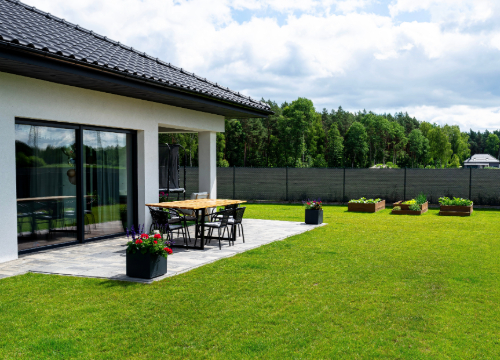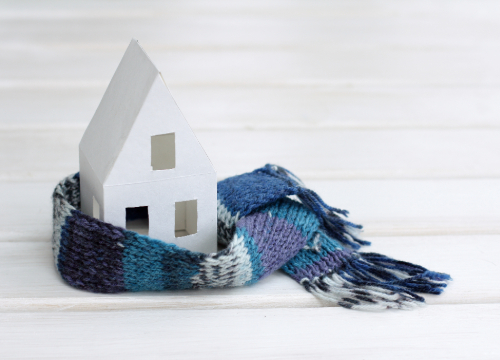When winter sets in, a cold and damp home is both unwelcoming and unhealthy. So what can you do to increase winter warmth without blowing the family budget?
There are a number of options for escaping the winter chills, but your choice needs to suit the size and construction of your home as well as your location and budget.
Take a look at these five ways for a warm and healthy home, without having to break the bank.
Reducing heat loss
The secret here is discovering ways to seal warmth inside your home, which reduces the need to replace heat that’s escaped through poorly insulated areas. Heat rises, so insulating your ceiling space is a great place to start. Also check out your under floor insulation- if it’s missing, this is your next priority. Get advice from insulation specialists to ensure you’re installing the right insulation for the job. And do your homework, because all insulation isn’t equal. R-values measure effectiveness, so invest in insulation that’s tested to stop the most heat loss. Not sure what an R-value is? Check out some information here.
Cold air can enter your home through poorly sealed windows, doors, extraction fans and electrical fittings. On a cold day, put your hand close to window and door closures - if you can feel cold air movement, install weather stripping. The cheapest heat source is the sun, so open curtains and blinds on sunny winter days to heat north-facing rooms. When the sun sets, close your curtains and blinds to trap warm air.
Windows play a huge part in determining the comfort levels in your home – both in winter and summer. They can help insulate against temperature extremes and also save heating costs. Double glazing gives you these benefits as well, plus it reduces condensation, keeping your home drier and healthier all year round. If you’re building a new home, double glazing could be a council requirement.
It’s worth investigating thermal curtains as an option before retro-fitting double glazing. Installed correctly, they’re a great way to dramatically reduce heat loss.
Installing or updating a fireplace
Having a fireplace in your house comes with emotional as well as rational benefits. Other forms of heating can’t match the atmosphere of a crackling fire while wind and hail batter the house. A fireplace is also a focal point that adds value to your home, whether you go for an open fire, a wood burner or a gas fire. Wood burner designs allow you to heat your home and, potentially, your hot water supply while using a renewable energy source that‘ll keep you warm, even when there’s a power cut.
Wood burners give you more heat than an open fire and won’t burn nearly as much fuel, but you’ll need to find out if there are any emission restrictions in your area and whether you’ll need a permit to install one. Also think about where you can store firewood in easy reach of your wood burner.
Gas fires can look like the real thing and have the advantage of coming to life at the flick of a switch. Open fronted gas fires can’t compete with the heating efficiency of a wood burner, however glass-fronted gas fires produce heat very efficiently – they’re also cheaper to run.
Installing a heat pump system
Heat pumps, when used properly, are an energy-efficient and safe way to heat your home. They’re also great for giving you instant heat. Smart Wi-Fi controlled heat pumps let you heat a space before you get home and switch off automatically when they’re not needed. It pays to get some professional advice, to ensure your unit’s rated to efficiently heat the size of your room.
Some heat pumps are more efficient than others, so look for the Energy Rating Label – the more stars you see, the more energy efficient the heat pump will be. The outdoor unit doesn’t have to greet your visitors at the front door, so ask to get it installed out of sight. Installers will try to convince you that ‘back to back’ is best, but it can be more about ‘easiest’ for them.
Individual heat pumps are designed to heat the room they’re in, not the whole house. An option to heat your entire house is a multi-split heat pump system that has one outdoor unit and multiple indoor units in each of the rooms you want to heat.
Dirty filters reduce heat pump efficiency and power consumption, so when the ‘clean me’ indicator light comes on, clean them straight away – it’s a five minute job.
Consider central heating
Central heating works by circulating heated air or water through ducting into all the rooms of your home. Heat can be produced by a heat pump, gas, diesel or wood fire and can be distributed through ceiling ducting or underfloor. The most efficient and cost-effective system is one that lets you control which rooms to heat using a remote or an app on your smart phone. Central heating does away with wall-mounted units and replaces them with aesthetically-pleasing ceiling vents or, in the case of under floor central heating, no vent intrusions at all.
Make sure you select a ducted system that will effectively heat your home according to the size of each room. Some types of central heating are really only an option for new builds or if you’re renovating. Arguably the most cost effective central heating system is a ducted heat pump, but check out the Energy Rating Label. Insulation is critical to ensure your central heating is cost effective.
Panel heaters for kids’ rooms
Flat panel heaters look great, but are best used for heating small spaces as they don’t produce a lot of heat. Some panel heaters can be colour-matched to suit your décor. They’re quiet, which makes them ideal to heat bedrooms overnight, and safe for small kids and pets. They don’t use a lot of power, but if you want to heat a larger space you’re better to consider other options. It’s always a good idea to consult a heating specialist when trying to decide on the most effective and efficient heating option.
You might also like...
-
 December 2024Lifestyle Blog | State Insurance
December 2024Lifestyle Blog | State InsuranceSurviving the holidays
-
 September 2024Lifestyle Blog | State Insurance
September 2024Lifestyle Blog | State InsuranceSpring prep your home and garden.
-
 June 2024Lifestyle Blog | State Insurance
June 2024Lifestyle Blog | State InsurancePreparing your home for winter
